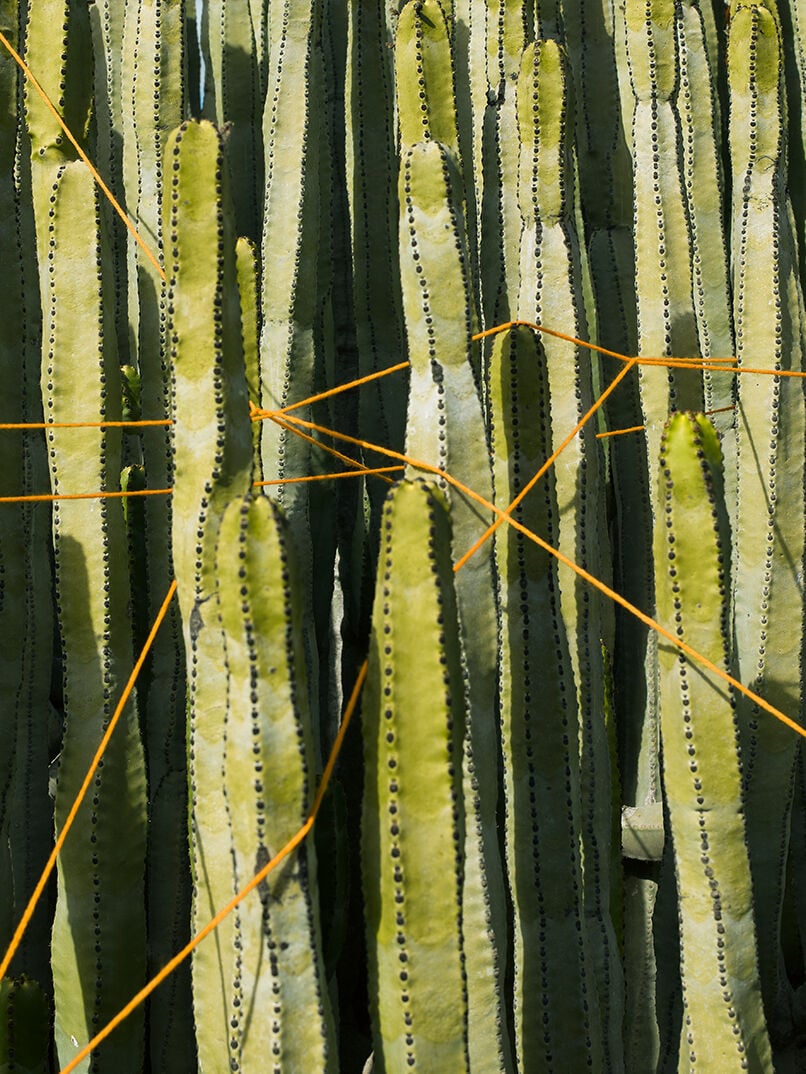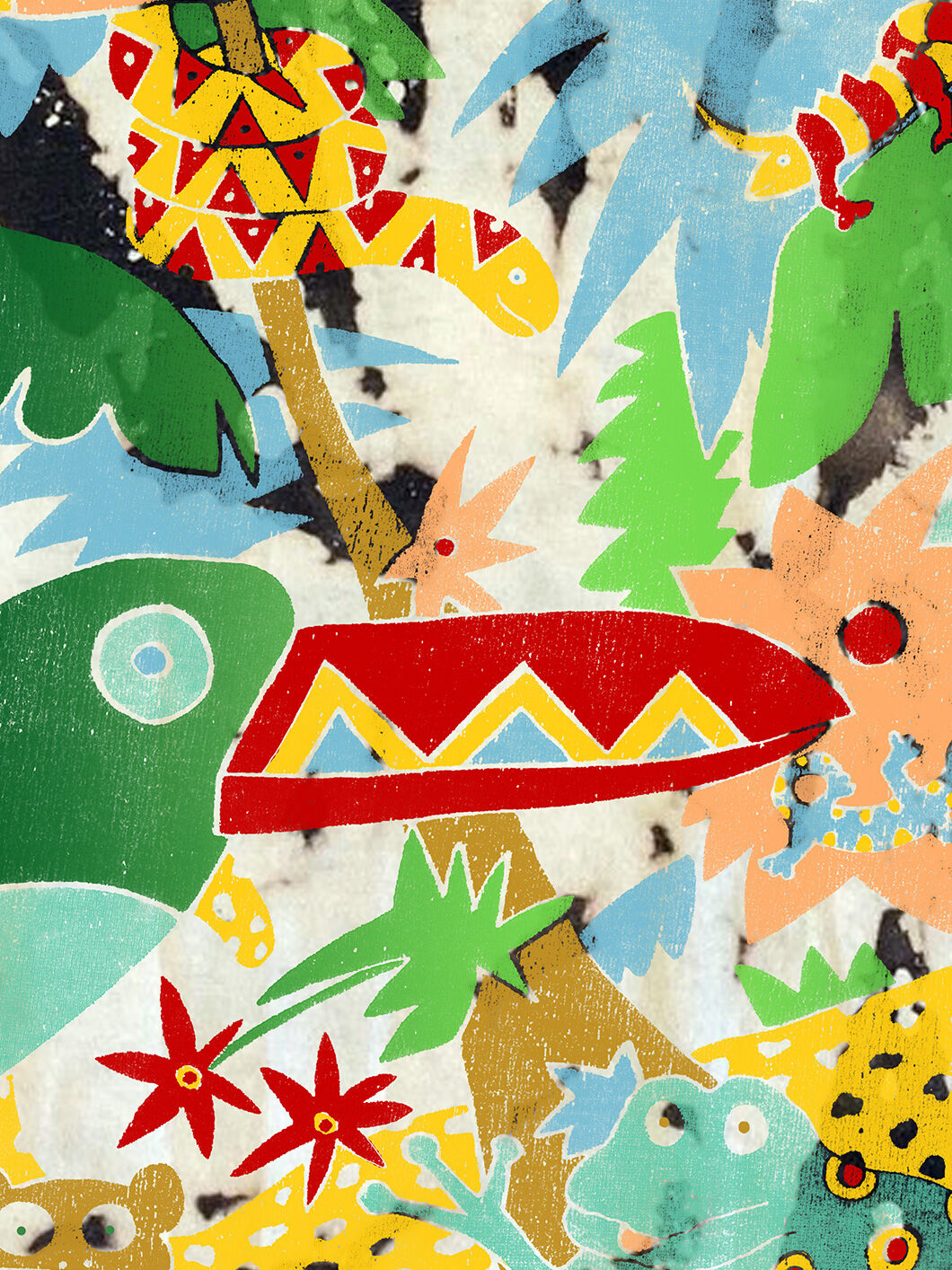We use organic cotton to create products in a way that reduces water and toxic chemical use, and improves conditions for farmers.
We have been using certified organic cotton since 2008, with around 73% of all the cotton we use today being organic. We are committed to increasing this percentage with every collection and are aiming to use 100% organic or recycled cotton by 2025.
Cotton is one of the most-used fibres in the fashion industry and starts its life in the soil. Highly toxic substances like fertilisers, pesticides and herbicides are applied to the 99% of all cotton that is currently grown conventionally¹. It uses 2.5% of the world’s arable land, but accounts for 16% of all the pesticides used.
Years of intensive farming and reliance on toxic chemicals have caused a decline in soil health and biodiversity. If there are not good water management systems in place, the chemical inputs can runoff and pollute local waterways as well as endanger farmers’ health if breathed in.
Growing organic cotton eliminates toxic chemicals which is better for the health of people and the health of soils. Healthy soils are better able to store water and carbon, which also helps to combat climate change. Organic cotton was developed by social entrepreneurs, farmers and NGOs who wanted to challenge the cotton industry’s overuse of chemicals and the societal problems it causes.
Organic cotton is a good first step, but we want to do even more. We are working directly with one of the farms in our supply chain to grow cotton using regenerative farming practices, also known as carbon farming. That means prioritising the restoration of soil health by using agricultural methods that actively restore soil nutrients, enhance biodiversity, increase soil’s ability to store water and carbon, and ultimately improve productivity and farmer wellbeing.
The environmental impacts of cotton growing
Cotton is our most used raw material by volume. Using our EP&L tool, we are able to compare the average environmental impacts of conventional vs organic cotton farming per kilogram – leveraging the best available data from major producing countries.
The environmental impacts of conventional cotton production are driven by the large quantities of water required to cultivate the crop, the conversion of land for agricultural use, the heavy use of toxic pesticides and fertilisers, and the energy required to operate machinery in some cases.
Organic farming has a much lower environmental impact; it uses significantly less water from local resources and does not allow the use of toxic chemicals, which improves soil health and reduces water pollution.
Our cotton supply chains
We are proud that 73% of the cotton we use is organic, with all of our jersey and denim made with organic cotton. While this is an improvement on conventional cotton, we are hoping to go further.
We are working on being able to trace our cotton all the way back to the farm that it was grown on so that we can ensure it is being grown in a regenerative way – not just maintaining, but actively improving soil health and biodiversity as well as helping to regenerate watersheds and supporting the surrounding ecosystem in thriving.
Most importantly, this kind of farming can be used to capture and store carbon dioxide from the atmosphere in the soil. Soil is an incredibly useful natural tool in the fight against climate change and this sort of nature-based solution could potentially provide up to 37% of the global carbon reductions that we need to make by 2030.
Types of cotton
Organic cotton
- Organic cotton is grown for a minimum of three years without the use of toxic and persistent pesticides and synthetic fertilisers.
- Organic farming encourages the use of natural measures, such as crop rotation and composting, to control pests and diseases rather than relying on chemicals. This promotes soil health and helps lock away atmospheric carbon into the soil, helping to mitigate climate change. 2
- Organic cotton does not allow the use of genetically modified seeds.
Conventional cotton
- Cotton alone accounts for almost 7% of all employment in some developing countries. 3
- Conventionally grown cotton uses more insecticides than any other single crop, nearly $2.6 billion worth of pesticides are sprayed on cotton fields each year.
- Cotton production uses 2.5% of the world’s arable land, but accounts for 16% of all pesticides used; in India 50% of all pesticides are used for cotton production, with negative impacts on farmers’ health. 4
Organic Certifications
We believe that, when used correctly, standards and certifications can be one of the most powerful tools in the industry. They support the integrity of product claims by providing verification from an independent third-party.
We only use organic cotton that has been certified to the Global Organic Textile Standard (GOTS) or Textile Exchange’s Organic Content Standard (OCS). The GOTS certifies cotton fabric made from a minimum of 70% organic fibres, setting detailed environmental and social criteria that must be followed throughout our supply chain and covering everything from processing to dyeing. The OCS traces and certifies the organic cotton fibre itself. We prefer and aim for all of our organic cotton to be certified as GOTS.
Synthetic materials can –and should– be recycled and come from recycled sources.
We source from farms committed to animal welfare and environmental stewardship, where possible.
Our paper and packaging come from recycled and certified sustainable sources.
We consider our environmental footprint at every point of our design process, even after our products have been sold.
We are exclusively releasing two t-shirts and two sweatshirts supporting Greenpeace’s campaign to stop deforestation.




















